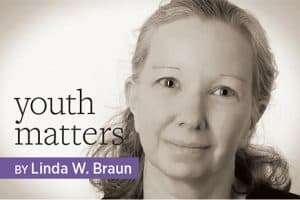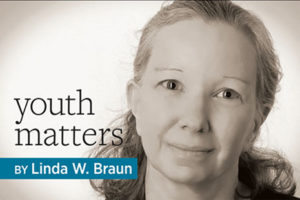
Connected learning (CL) is not new, but many librarians struggle with embedding the concept into programming and services.
“Library staffers still are uncertain what the [CL] framework actually encompasses and how to integrate it into library services for and with teens,” says Lance Simpson, youth services director at Tuscaloosa (Ala.) Public Library.
Simpson is a member of the project Transforming Teen Services: A Train the Trainer Approach (T3). A joint endeavor of the Young Adult Library Services Association (YALSA) and the Chief Officers of State Library Agencies (COSLA), it is funded by the Institute of Museum and Library Services. In this first year of the initiative, five state library agency consultants from Alabama, Maine, Minnesota, Rhode Island, and Wisconsin are working collaboratively with front-line public library staffers from their respective states on a pilot program that teaches library professionals how to use CL principles—such as interest-driven learning and youth mentoring—in their work. Over the three-year timeline, the project will engage staffers from all US states and territories on CL and computational thinking.
What is connected learning, exactly? Cultural anthropologist Mizuko Ito and her colleagues who developed the CL framework define it as “when a young person is able to pursue a personal interest or passion with the support of friends and caring adults, and is in turn able to link this learning and interest to academic achievement, career success, or civic engagement.” For example, at Las Vegas–Clark County (Nev.) Library District, Branch Manager Salvador Avila hosts DJ classes for teens and provides opportunities for them to build relationships with music professionals in the city. [Editor’s note: Avila is a member of the American Libraries Advisory Committee.]
The YALSA/COSLA trainers realized early on that in many small and rural communities, CL is seen as something achievable only in large library systems that are well funded and technology rich. The trainers seek to dispel those assumptions. One way they are achieving this is by focusing on real-life examples of how CL is already successful in small and rural libraries.
Take, for instance, Salmon (Idaho) Public Library. T3 cohort members see this rural library as a model of CL for the way that mentors and interest-based learning are integrated into the library’s makerspace activities. The library brings in local professionals, such as leatherworkers and woodworkers, to help teens learn about those careers and the skills they require. T3 trainers point to this and other examples to help staffers understand how their work already includes facets of CL and suggest methods for being more intentional in that integration.
Trainers help staffers understand how their work already includes facets of connected learning.
T3 isn’t the only project focused on dispelling assumptions about CL while enhancing staff skills. The ConnectedLib project, also funded by IMLS, has partnered faculty from the University of Washington and University of Maryland LIS programs with public libraries to work toward this common goal. After a year of research across libraries in the US, the ConnectedLib team determined the CL professional needs of library staffers and developed a series of online modules to help those working with teens understand the what, why, and how of CL.
Each module in the ConnectedLib suite was tested with staffers at rural, small, urban, and suburban libraries. Modules cover everything from programming and partnerships to assessment and capacity.
“I am really hoping that many of our smallest and rural public libraries that have limited staff and resources will be able to implement connected learning programs at their libraries,” says Mega Subramaniam, associate professor at University of Maryland’s iSchool and member of the ConnectedLib project.
CL is a set of principles that libraries of all sizes and budgets can embrace when building teen services. Looking to get started? Check out the ConnectedLib modules and be sure to watch for T3’s face-to-face CL trainings that are coming to your state soon.


